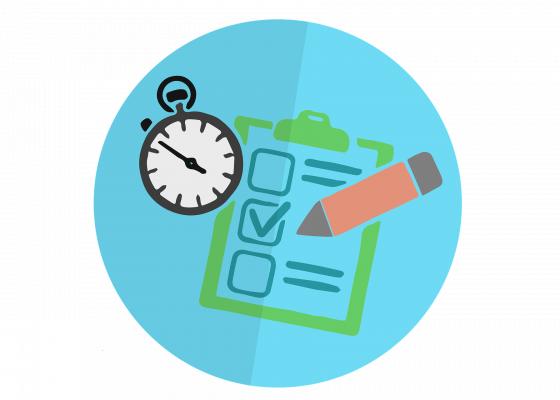

Learning resource
Social network map
The process of creating the map together with the participant is already rich in content. It offers the opportunity to visualize, talk and reflect about the social system the participant is involved in.
1. Use the attached plain form for the map. It shows the 4 sectors friends/acquaintances, family, colleagues and co-workers. The spot in the centre (called anchorspot) represents the participant. The instructor asks the participants to name people in his/her social network and marks them with a spot on the map.
The distance from the anchorspot to a specific person shows how close the relationship or connection to that particular person is. If the person and the participant have contact in real life, the anchorspot and the spot of that person get connected with a line. When all spots are finally placed, connect the spots of persons who are in contact with each other with a line. Eventually a whole network becomes visible.
The teacher/trainer/social worker may help to find potentially lost contacts by asking questions concerning the participant's family, friends, organisations, etc. Motivate the participant to name all the persons he/she can think of, although it is eventually the participant who decides about the persons they want to name. The participant decides when to stop.
2. Calculating the density data, which provides information about the functionality of the participant`s network:
The density is calculated according to the following formula:
Density = n / { [ N (N-1) ] / 2 }
- N = is the total number of persons in the network
- n = is the number of pairs of persons, who know each other and maintain a personal contact with each other. (Every pair is counted only once, the anchorperson is not to be taken into account.)
- The measured density value (in the case of the example below: 0,27) expresses the relation to the persons and if these persons are connected with each other. That value is somewhere in between 0,00 (the network consists only of single persons, who don´t know each other) and 1,00 (every person has contact to every other person in the network).
- Density shows how tight and centred a system is. Very tight systems are usually characterized by easily available communication channels, shared information and similar perspectives. That might bring some disadvantages for the members of the network, such as restricted autonomy and even dependence or lack of various resources.
- (For example a network density higher than 0,5 may be considered as relatively tight.)
3. As relevant key positions in a network, the following should be mentioned in this context:
- The Star: The star is the spot that shows the most connections to other persons. This person has the most relations within the network of the anchorperson. Thus a "Star"-person might be influential and important, especially if their relations are cross-sectoral.
- The Isolated: these are persons who only show the connecting line to the anchorperson. These persons might have outstanding functions – they might be the perfect consultants. To them anything can be trusted, without the fear of the information ending up on the network. The Isolated have an external view, they are not directly involved in the events inside the network.
- Plain social-network-form (attached).
- One teacher/trainer/social worker that feels a positive and constructive connection to a participant.
- It may be helpful for the trainer to create their own social network map for practising how to handle this tool. In this way the teacher/trainer/social worker becomes familiar with the procedure before they start.
The teacher/trainer/social worker and the participant do their analysis together on the map. The evaluation is provided by discussing (communicating) about the process of drawing the map:
How does the map look? Are there contacts in every sector? Are there cross-sectored contacts? Are most of the contacts in only one sector? Who is/was a role model or idol and why? Is there any kind of role model missing?
Is this consisting network (regarding the economical and political background of the national society) offering a stable base for a good life? Is there violence involved? Who is and who is not appreciating or accepting your identity in this network? Do you feel you are able to participate in society? What would the anchorperson like to change? What would the trainer/teacher/social worker recommend to change?
Concentrate on potential resources.
Ask questions to the so called „Isolated“ (if there are).
What is the relationship to these people? Is it recommended to reinforce these relations? Try to find out, if the relation has changed – was it better before? Is there a chance to follow up to a former relation that could be a positive contact? Is there a community that you feel associated with? Is there a community you feel excluded from?
Reflect on the position of stars.
What does their influence mean? Is it good to have them in that powerful position? What is the advantage, what is the disadvantage?
Reflect the visualization and the density of the network: If the density is too high, they may speak about options how to change that: e.g.: Are there any persons, that you could refresh contact with?
Think of adequate questions that refer to issues, concerning people who are susceptible for radicalisation: e.g.: vanishing networks of extended family, current society, religious communities, integration, overstraining, lack of solidarity, process of alienation as precursor for radicalisation, etc.
- The participant considers the changes that he/she would like to see on his/her social network, and draws them on the map using a different colour for a better visualization effect.
- A new social network map can be drawn with the same participant again after a certain period of time. In this way, the changes become explicitly visible.
English
Slovenian
Portuguese, Portugal
French
German
Romanian
Italian
Spanish
German
Dutch
